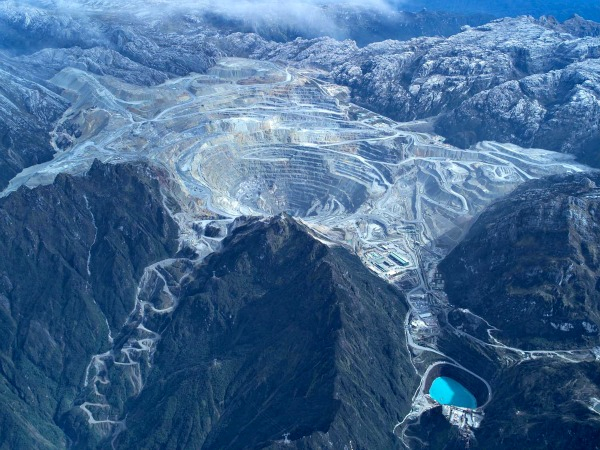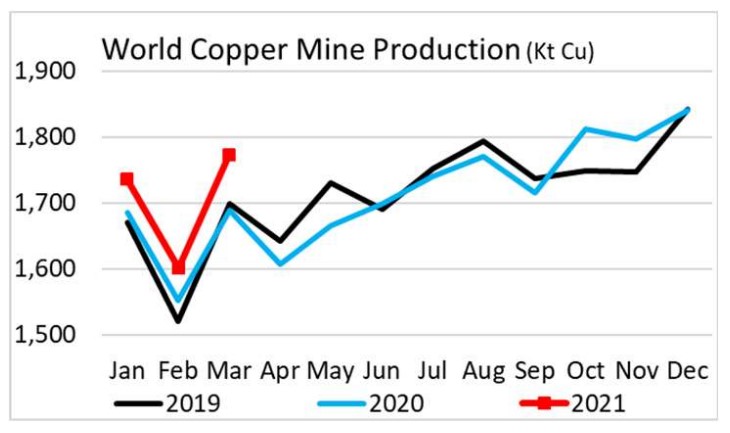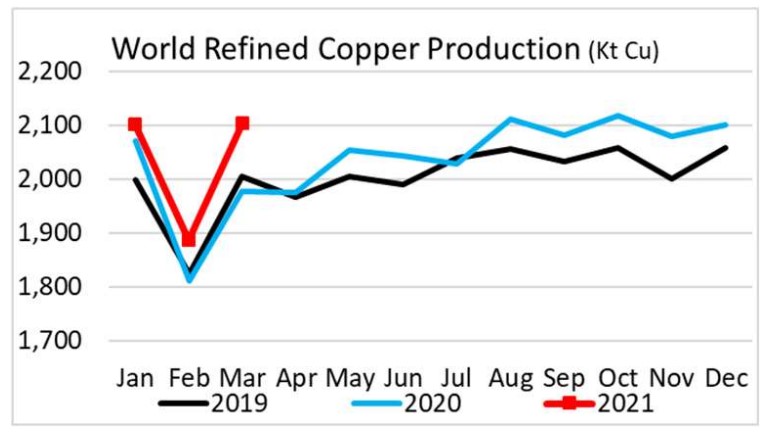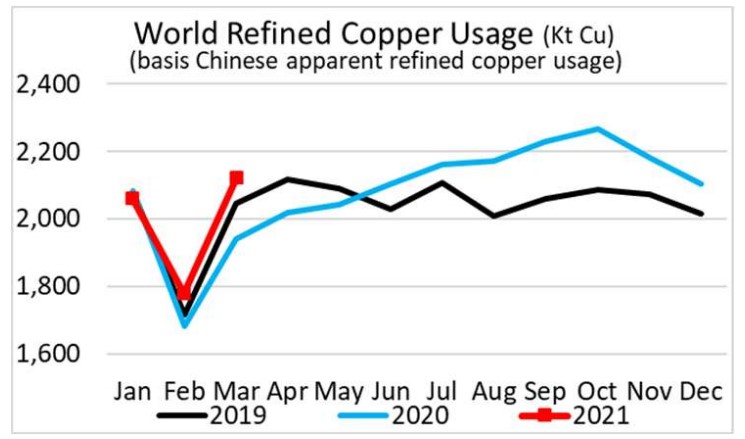
The International Copper Study Group (ICSG) has released preliminary data for March world copper supply and demand in its June 2021 Copper Bulletin.
Data indicates that world copper mine production increased by 3.7% in the first three months of 2021, with concentrate production increasing by 5.5% and solvent extraction-electrowinning (SX-EW) declining by about 3.5%.

World mine production started to recover in June 2020 as lockdown measures eased and the industry adapted to stricter health protocols that remain in place in 2021.
Output in Peru, the world’s second biggest copper mine producing country, increased by 3% mainly because March production was up by 18% from a constrained March 2020 basis, ICSG reports. However, Jan-Mar 2021 production is still 10% below that of Jan-Mar 2019.
Indonesian production increased by about 91% mainly due to the continued ramp-up of underground production at the Grasberg mine.
Strong increases were also seen in the Democratic Republic of Congo, Mongolia, Panama and Russia due to additional output from new or expanded operations, according to ICSG.
Indonesian production increased by about 91% mainly due to the continued ramp-up of underground production at the Grasberg mine
However, in Chile, the world’s biggest copper mine producing country, total output was down by 2% with a 3.5% growth in concentrate production being more than offset by a 16% decline in SX-EW output.
Preliminary data indicates that world refined copper production increased by about 4% in the first three months of 2021 with primary production (electrolytic and electrowinning) up by 4.2% and secondary production (from scrap) up by 2.3%.
Preliminary official Chinese refined production data indicates growth of 8%, ICSG says.

Chilean electrolytic refined output increased by 15% mainly due to the fact that in the comparative period of 2020 production was ramping up after smelter upgrades to comply with new environmental regulations.
However, after taking into account a significant 16% reduction in electrowinning refined production, total Chilean refined copper production (electrolytic and electrowinning) declined by 6%, the report reads.
In Africa, refined production was up by 16% in the D.R. Congo due to the continued ramp-up of new or expanded SX-EW plants, and by 39% in Zambia, where output has recovered from smelters’ operational issues and temporary shutdowns during 2019 and early 2020.
Preliminary data indicates small declines in Brazil, Japan, Mexico (SX-EW), Russia, Spain (SX-EW) and Sweden for various reasons including maintenance work, operational issues and the shutdown of SX-EW plants.
Globally, secondary refined production (from scrap) increased by 2.3% with China being the biggest contributor to growth. Preliminary data indicates that world apparent refined copper usage increased by 4.5% in the first three months of 2021:

The covid-19 related global lockdown has had a notable negative impact on the world economy and subsequently on key copper end-use sectors in all regions exChina. Although usage started to recover in the 2nd half of 2020, global demand remains below pre-pandemic levels in most countries.
World ex-China refined copper usage has been significantly impacted by the pandemic and is estimated to have declined by about 9% in 2020, ICSG reports, adding that usage over the first three months of this year is estimated to have declined by a further 4%.
In contrast, Chinese apparent usage (excluding changes in bonded/unreported stocks) increased by around 13% supported by a 5.8% increase in net refined imports. Preliminary world refined copper balance in the first three months of 2021 indicates an apparent surplus of about 130,000 tonnes.